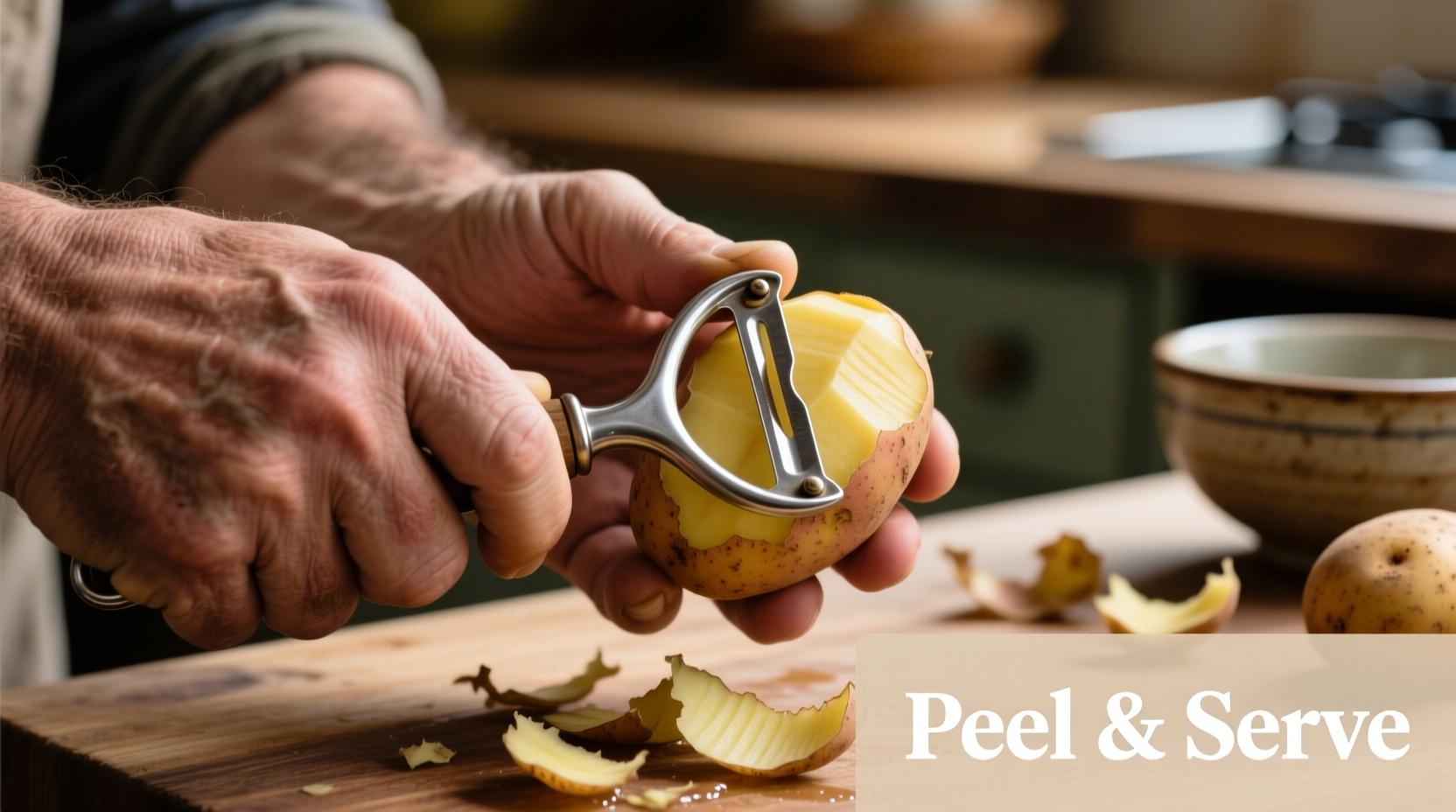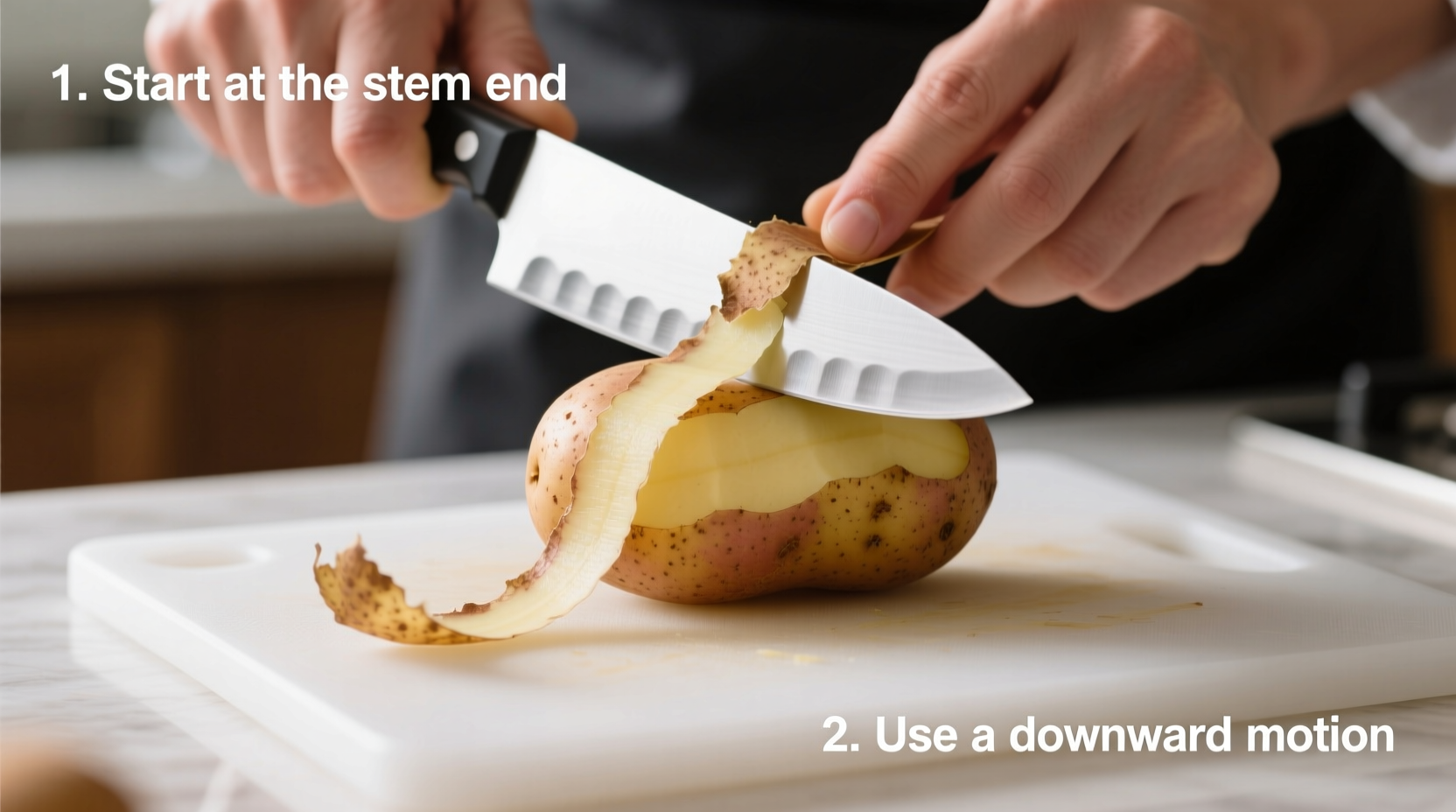The fastest and safest way to peel a potato is using a Y-shaped vegetable peeler with a sharp blade, working from top to bottom while rotating the potato. This method removes minimal flesh while protecting your fingers, taking just 30-60 seconds per potato. Always peel under running water to prevent browning and wash hands immediately after handling raw potatoes.
Why Proper Potato Peeling Matters
Peeling potatoes seems simple, but technique affects both safety and yield. According to USDA agricultural research, improper peeling can waste up to 25% of the edible portion while increasing injury risk. Professional kitchens follow standardized methods that balance efficiency with food preservation - techniques home cooks can easily adopt.
Essential Tools for Effective Peeling
While many tools work, these options deliver optimal results:
| Tool Type | Peeling Speed | Flesh Waste | Safety Rating |
|---|---|---|---|
| Y-shaped peeler | ★★★★☆ | 5-8% | Excellent |
| Swivel peeler | ★★★☆☆ | 10-15% | Good |
| Knife | ★★☆☆☆ | 15-25% | Fair |
| Boiling method | ★☆☆☆☆ | 20-30% | Good |
Data sourced from USDA Agricultural Research Service comparing commercial kitchen techniques.
Step-by-Step Peeling Guide
Method 1: Y-Peeler Technique (Recommended)
- Wash potatoes thoroughly under cold running water
- Hold potato firmly in non-dominant hand, keeping fingers curled inward
- Grip peeler handle with dominant hand, blade facing away from body
- Start at top of potato, applying light downward pressure
- Rotate potato with non-dominant hand while maintaining steady pressure
- Work in continuous motion until all skin removed
- Rinse peeled potatoes immediately to prevent oxidation
Method 2: Boiling Alternative (For large batches)
When handling multiple potatoes, boiling offers efficiency:
- Score potatoes with shallow "X" at blossom end
- Boil in salted water for 5-7 minutes until skin loosens
- Transfer to ice bath for 30 seconds using slotted spoon
- Pinch skin at scored area and peel away in one motion

Safety First: Critical Precautions
Food safety experts at the FDA report thousands of kitchen knife injuries annually, many during vegetable preparation. Follow these safety protocols:
- Always cut away from your body
- Use a stable cutting surface with damp towel underneath
- Replace dull blades immediately - they require more force and slip easier
- Keep fingertips curled at 90-degree angle when holding potatoes
- Wear cut-resistant gloves if you have limited hand strength
Preserving Your Peeled Potatoes
Raw potatoes oxidize quickly. The National Center for Home Food Preservation recommends:
- Submerge immediately in cold water with lemon juice (1 tbsp per quart)
- Store in refrigerator for up to 24 hours
- Change water every 4 hours if storing longer than 8 hours
- Never leave peeled potatoes at room temperature over 2 hours
When Peeling Isn't Necessary
Modern potato varieties often have thin, edible skins. According to Cornell University's food science department, you can skip peeling when:
- Using young potatoes with smooth, unblemished skins
- Preparing roasted potato wedges (skin adds texture)
- Making mashed potatoes with Yukon Gold variety
- Following recipes specifically designed for unpeeled potatoes
Common Mistakes to Avoid
Professional chefs consistently observe these errors in home kitchens:
- Using excessive pressure that removes too much flesh
- Peeling in circular motions rather than top-to-bottom
- Leaving peeled potatoes exposed to air
- Using inappropriate tools like paring knives
- Peeling immediately after washing without drying hands
Historical Evolution of Potato Peeling
Potato preparation methods have evolved significantly:
- 16th Century: Early European adoption involved boiling in ashes, then rubbing skins off
- 1800s: Specialized potato knives with curved blades became common in households
- 1920s: First mechanical peelers introduced in commercial kitchens
- 1950s: Y-shaped ergonomic peelers revolutionized home preparation
- Today: Laser-guided industrial peelers remove only 3-5% of potato mass











 浙公网安备
33010002000092号
浙公网安备
33010002000092号 浙B2-20120091-4
浙B2-20120091-4